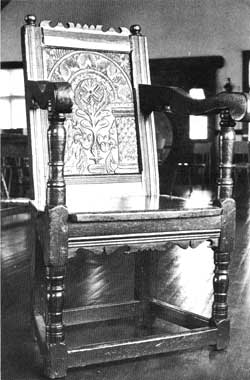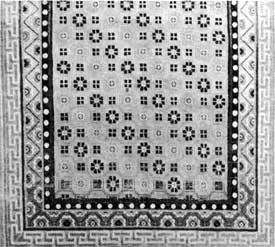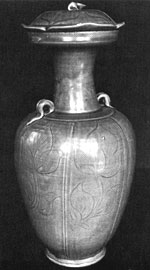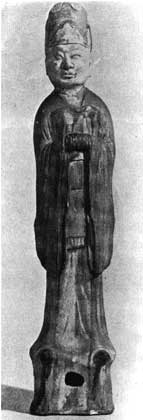John & Katharine Maltwood Collection
| View the Collection |
History of the Collection |
John & Katharine Maltwood |
Information Resources |
John & Katharine Maltwood as Collectors | ||||||||
|
In furnishing their homes with beautiful and meaningful objects the Maltwoods were in many ways following the ideas of William Morris whose golden rule was "have nothing in your house which you do not know to be useful or believe to be beautiful." The Arts and Crafts artists admired early English furniture designs and popularized the collecting of oriental rugs, porcelain and paintings. They felt that with industry, art and beauty had become divorced from use instead of being part of the fabric of living. Beautiful objects were simple and handcrafted rather than luxurious, meaningful rather than precious, and honestly made reflecting the ideal state of affairs where art is man's expression of his joy in labour.
Being well versed in this Morris-Ruskin school of thought, Katharine Maltwood appreciated the simplicity and beauty of English Gothic as expressed in the vernacular traditions of British seventeenth century furniture.69 The collection contains several very fine pieces which show a marked preference for sturdy construction, hand carved decoration and rough grained, native woods such as oak. Tables, chairs, chests and dressers from the Tudor and Stuart periods added graciousness to the public rooms. In the bedrooms were four-poster bedsteads, one heavily carved with the coat of arms of a cardinal, another with Chinese hangings and a third, with canopy, dating from 1685. In all they created a pervasive atmosphere of English history in their home. On the floors the Maltwoods preferred Oriental and Persian rugs, most of them antiques, which again reflect the craft bias and respect for religious content. According to Morris and his associates, the hand crafted carpets of the East were alone worthy of emulation in their skillful workmanship and rich and imaginative designs.
In place of tapestries as of old, Oriental silk hanging scrolls decorated walls and screens. These paintings came from collections in Paris, London and Peiping; the subjects are landscapes, flowers, figures, birds and horses. It was the expression of philosophical or lyrical conceptions in these Chinese works that appealed to Katharine Maltwood. They attempted to reveal something of a common great spiritual system underlying both man and nature. This is well exemplified in the atmosphere of pantheistic repose and calm contemplation in "The Eight Taoist patriarchs in a gorge in the mountains with attendants", which dates from the Ming Dynasty (A.D. 1368-1644). Among the Japanese Kakemonos are two representing Amida Buddha attended by Wisdom and Mercy70 which date back to the Kamakura period (A.D. 1183-1334) and were purchased by the Maltwoods on their trip to Japan in 1920.
Similarly the artist's sympathy with Eastern ideals is reflected in the purity of form discernible in her choice of Chinese vessels. In the ceramics there is a marked preference for clear and essential form emphasized by line and subtle refinements of shape. Among the many pieces are a vase and cover of Celadan porcelain from the Sung Dynasty (A.D. 960-1279) and, from the early Ming period, a round dish of Tzu-Chou ware decorated with flowers and leaves in brown and sepia. Other vessels include a Lapis Lazuli bowl on three carved feet, a bronze incense burner from the Ming Dynasty and a green jade jardiniere on three "sacred fungus" feet which takes the shape of the natural block from which it was carved. Also of interest among the Chinese works is the early figure of a Tomb Attendant71 from the T'ang Dynasty (A.D. 618-906) and a fine pair of ridge tiles, blue horses, representing Day and Night in clouds, from the Ming Dynasty.
The miscellaneous objets d'art often reflect the all encompassing nature of Katharine Maltwood's philosophical interests. The mysticism of the East is suggested in her collection of votive figures from Thailand and Burma. Ivory and Lapis Lazuli crucifixes mingle with Buddhist shrines and Taoist images. The Moslem world is represented by antique pottery and metalwork. There is also a sizeable collection of oil and watercolour paintings. Many are modern landscapes while others romantically capture the beauty of places especially dear to the couple. Augmenting these works was a library containing numerous art and reference books. Much of the collection was put together as ancilliary to the artist's own works and interests, examplars to illuminate, confirm and support the meaning of her own sculptural pieces. In all it sets a stage for the Maltwoods' rather detached lifestyle and bespeaks their romantic search for moral goodness.
All content on this page is copyright © 7 February, 2006 |
||||||||




